As disasters mount, central banks gird against threat of climate change
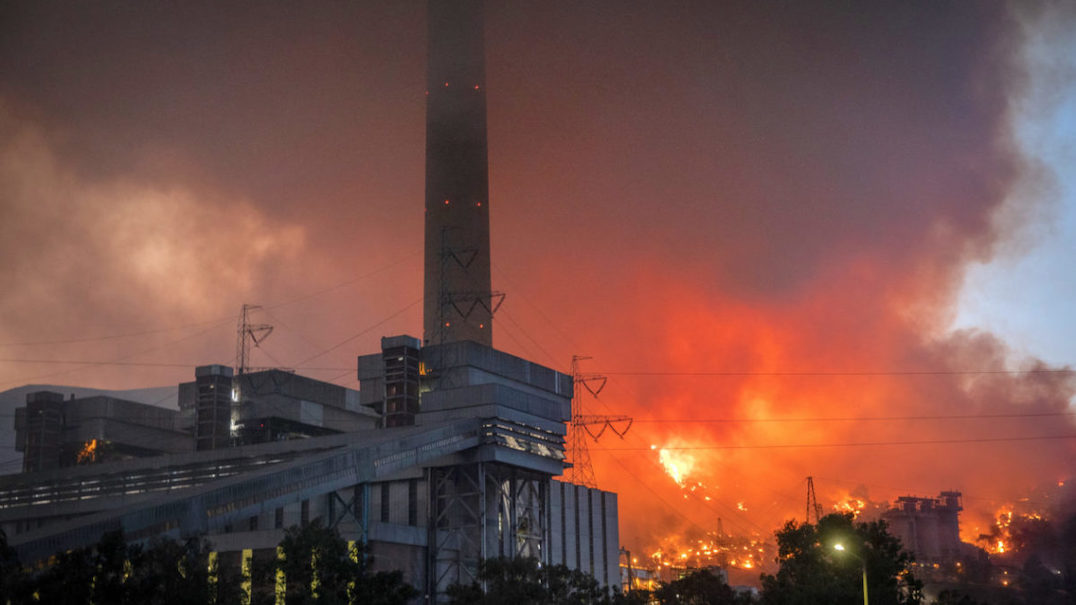
Climate change is rattling the world’s central bankers. With unprecedented heat and wildfires in the American West and southern Europe, and record floods racing through German towns and Chinese megacities in recent weeks, fears are growing among regulators of a coming cascade of climate-induced economic blows potentially more far-reaching and intractable than the financial crash just over a decade ago.
In the past two months, the central banks of the world’s five largest economies — the United States, China, the European Union, Japan, and the United Kingdom — have all raised the stakes in their demands for the commercial banks they regulate to make public the looming risks they face as wild weather takes hold.
Their calls show that central bankers are already responding to concerns about their past passivity on climate — concerns reflected at a G7 meeting in June, where Western industrial leaders issued a final communique that declared, “We emphasize the need to green the global finance system … We support moving towards mandatory climate-related financial disclosures.” That means requiring commercial banks to reveal the risks to their balance sheets — and those of their clients — of both a changing climate and any rapid collapse of markets for fossil fuels as governments try to head off disaster by weaning off fossil fuels.
The world’s major central banks, which control the production and distribution of money on behalf of national governments, have traditionally sought to remain “market neutral” when carrying out their responsibilities. That means they avoid favoring one part of the economy over others. But now the biggest central banks appear to be concluding that carbon neutrality is more important than market neutrality.
In June, the Bank of England launched mandatory disclosure of climate risks by big British banks, with the U.S. Federal Reserve indicating that it intends to follow suit. Meanwhile, the People’s Bank of China said it was making green loans in line with its government’s policy on climate change. In July, the Bank of Japan began offering no-interest loans to commercial banks funding green projects, and the European Central Bank announced that it was looking to gauge the carbon footprint of financial institutions and their vulnerability to climate change.
In addition, British Chancellor of the Exchequer Rishi Sunak recently updated the Bank of England’s responsibility “to reflect the government’s economic strategy for … the transition to a net-zero economy.” Since then, said economist Yannis Dafermos of SOAS University of London, the bank has changed its approach, “going beyond market neutrality to being much more interventionist in the fight against climate change.” In May, it published a discussion paper on options for greening its bond buying, which included setting targets for emissions from its corporate bonds.
Not to be outdone, in July the European Central Bank announced that it intends to “adjust the framework guiding the allocation of corporate bond purchases to incorporate climate change criteria.” Those criteria include European Union legislation to cut EU emissions by 55 percent from 1990 levels by 2030, its target under the Paris Agreement.
The debate among central bankers about how to address climate change was kicked off in 2015 by Mark Carney, then governor of the Bank of England and chair of the Financial Stability Board, an international body that coordinates central banks and financial regulators. At the Paris climate conference that year he warned that climate change was a “systemic risk” to the world financial system.
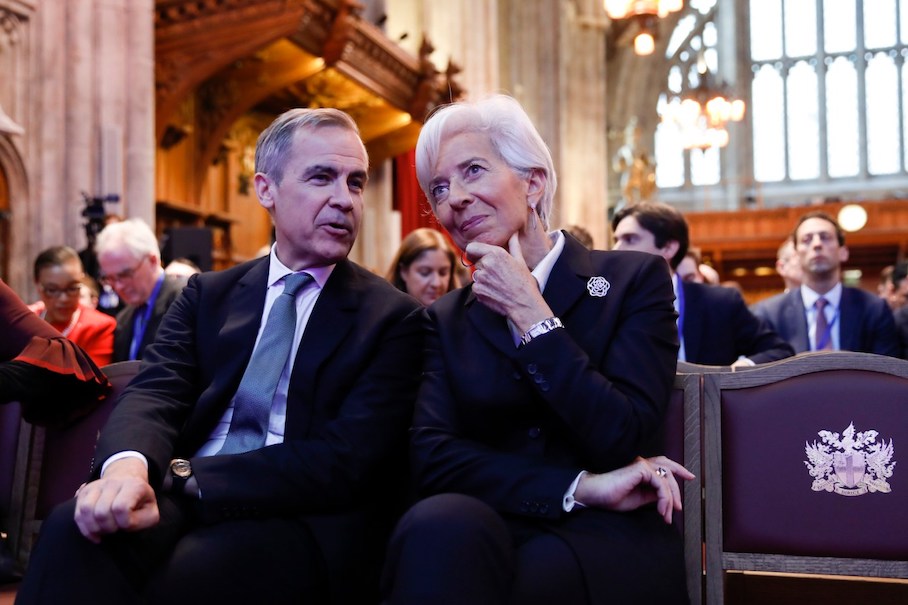
Carney called for central bankers to chart a course for a net-zero world that would not crash capitalism, instead making it part of the solution, and announced that the Financial Stability Board was setting up a task force to develop a carbon-disclosure system — essentially carbon footprinting for financiers.
In a speech to Lloyd’s of London earlier that year, Carney identified two kinds of risks to bankers: “physical risks” to their investments from raging storms, wildfires, flooding river valleys, eroding coastlines, heat waves, and droughts; and “transition risks” arising from the falling value of coal mines, oil wells, pipelines, and other fossil fuel infrastructure plummeting as the world cuts carbon emissions. These could become “stranded assets,” he said.
Carney warned that losses from weather-related natural disasters had risen threefold in the past 30 years. In one particularly stark example of the impact of climate change, a largely unnoticed 8-inch rise in sea levels around Manhattan had increased the losses from Superstorm Sandy in 2012 by 30 percent. His researchers also flagged financial disruption caused by crop failures during droughts in 2007 and 2010. Since his warnings about transition risks, falling demand for coal has forced several major coal companies — including Peabody, the world’s largest — to file for bankruptcy.
Even so, central bankers have generally been slow to smell the coffee. Traditionally, Carney said, bankers simply don’t look far enough ahead or widely enough to see the significance of climate change, noting that the horizon for monetary policy is only two to three years. “In other words, once climate change becomes a defining issue for financial stability, it may already be too late,” he said.
Since he raised the warning flags, Bank of England researchers have emphasized the growing threats. “A weather-related natural disaster could trigger financial and macroeconomic instability if it severely damages the balance sheets of households, corporates, banks and insurers,” Sandra Batten and colleagues concluded in a 2016 internal paper.
The flight of capital could become a stampede, said Sarah Dougherty, a former staffer at the Federal Reserve who now works on green finance for the Natural Resources Defense Council: “The crash of 2008 is seen as the model for what could happen with climate change.”
If one coastal town is washed away by rising tides, or one mountain resort is consumed by wildfires, it could stunt investor interest in hundreds of others. When the value of assets held by a bank falls, it becomes unable to invest elsewhere in the economy. And if one bank rocks, then others look vulnerable too. Additionally, if climate disasters bankrupt insurance companies or lead them to pull out of high-risk areas, it could further inhibit lending.
A modeling study on the interactions between ecosystems and financial systems, co-authored by Dafermos, shows that economic and financial conditions are likely to deteriorate badly at warming above 2.5 degrees C (4.5 degrees F). Since 1900, the world has warmed around 1.1 degrees C. “Declining economic growth and the destruction of capital” will cause corporate defaults and credit rationing, “giving rise to a vicious financial cycle” that will end up stifling green investment along with the rest, “disrupting the transition to a low-carbon economy,” the study found.
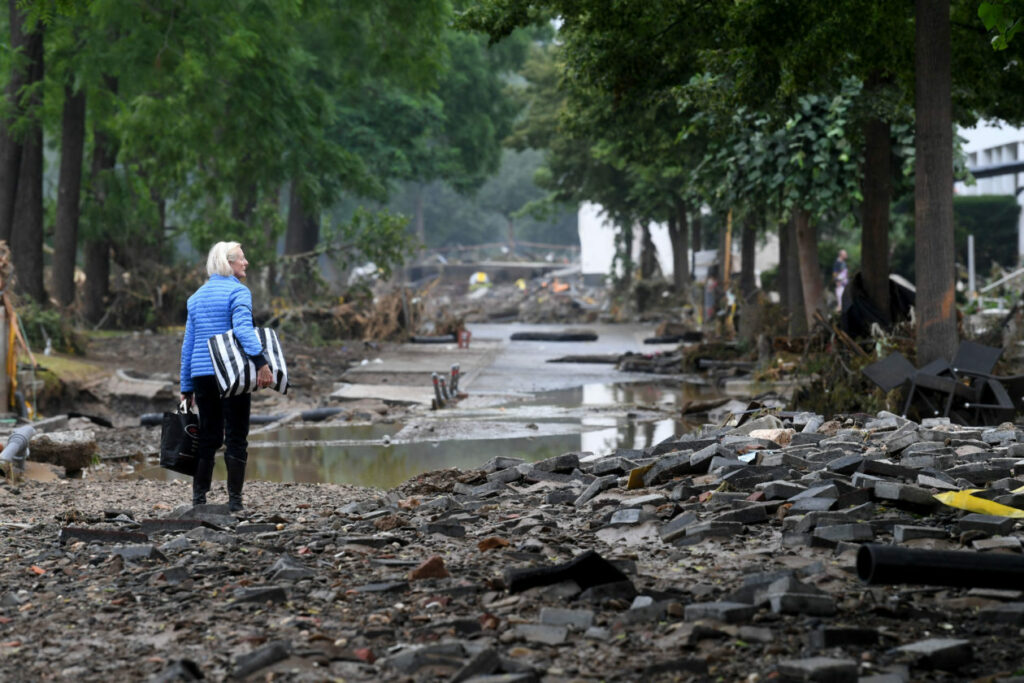
So what do central bankers say should be done? Their first step has been to gain information through requiring big financial houses to investigate and disclose the risks that climate change poses to their solvency. The Financial Stability Board’s Task Force on Climate-Related Financial Disclosures developed best practices, and many central banks are now adopting its proposals.
In its June announcement on climate change, the Bank of England, under its new governor Andrew Bailey, said climate disclosures would be mandatory across the U.K. economy. In the U.S., disclosure is the province of the Securities and Exchange Commission. But Jerome Powell, chair of the Federal Reserve, suggested in July that the U.S. will probably end up requiring banks to disclose data to allow the running of climate stress scenarios, as carried out in Europe. “My guess is that’s the direction we’ll go in, but we’re not ready to do yet,” he told the Senate Banking Committee.
Former Fed staffer Dougherty has no doubts: “They plan to do it. It will be announced almost certainly this fall.”
As disclosure becomes de rigueur, a new cottage industry of advisors is emerging to help corporations and financial houses alike through the minutiae of assessing climate risks to their assets, whether flooding of a coastal industrial facility, drought threatening crops, or wildfires ripping through forests. Insurance companies may be at greatest risk, and their collapse would pose systemic risks to the wider financial system, management consultants McKinsey concluded last year.
Beyond disclosure of risk lies stress testing to see if a company or bank stays afloat under different scenarios, ranging from extreme weather to fossil fuel bans, from carbon pricing to litigation based around responsibility for climate damage. Banks are already required by regulators to carry out stress tests for a range of financial risks. They are usually also required to have enough capital to survive a crisis scenario, and if not, to set aside more. There are now strong moves to add climate risk.
Several major U.S. commercial banks declined to comment on their approach to climate risk for this article. But in a blog post for American Banker last year, Greg Baer, the CEO of the lobbying group Bank Policy Institute, whose members include Bank of America and Citibank, said they were “fully engaged on assessing and disclosing climate risks.” However, he said, formal stress testing of their operations by central banks “is one idea that does not appear ready for prime time.”
The Bank of England, which has generally been ahead of the curve on the issue, announced in June that it was undertaking the first comprehensive stress test of climate risks to Britain’s biggest banks and insurers, to be published in May 2022. It would test their viability under three scenarios: early global action to cut carbon dioxide emissions, delayed action, and no action beyond what is already committed, which Carney, now a UN special envoy on climate action and finance, recently termed the “catastrophic business–as-usual scenario.”
The European Central Bank is also aiming to undertake stress tests starting in 2022, while the People’s Bank of China has already conducted stress tests, though it has yet to publish the results. Leading central banks could, as with other stress tests, use the results to impose new requirements on commercial banks to hold more capital if their existing investments are considered high risk, but it’s not clear if or when they will do so. The Bank of England has said that its stress tests are for the moment “exploratory” and would not be used in this way, drawing ire from critics.
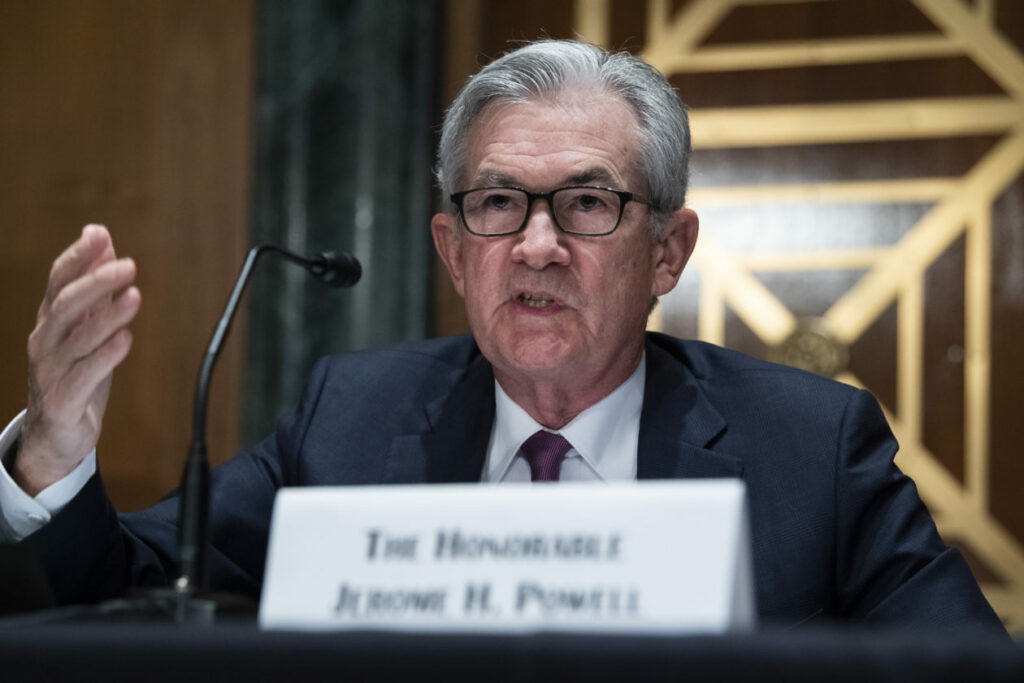
The bank is “stalling,” said David Barmes of the London-based advocacy group Positive Money. “Every day the Bank delays the implementation of climate capital rules, it further undermines its remit to protect financial stability and support a net-zero transition.”
The presumption behind disclosure and stress testing is that if they reveal potentially scary outcomes, this will change investment behavior and allow what economists see as a more efficient allocation of capital in a world in which climate change increasingly dominates economies.
But is efficient allocation of capital the same as an efficient response to climate risk? Dafermos says no. “When finance institutions start protecting themselves from risk, they will start selling government bonds and ending investments in climate-vulnerable countries — those that need more support, especially for adaptation,” he said. “That will make matters worse.”
Rather than protecting the financial system from climate change, “what we need is to protect climate from the finance system,” he said. That will require a much more interventionist approach from central banks.
The possibilities here are huge. Most central banks are big investors. As part of their core responsibilities to maintain economic growth, they routinely buy bonds and other financial products. The Bank of England, for instance, currently holds more than $20 billion in corporate bonds. Central banks usually claim they make these investments in a “market-neutral” way. But critics say this is disingenuous. It reinforces the status quo. Market neutrality “hardwires a carbon bias,” Dafermos said.
A 2017 study by Emanuele Campiglio, then at the London School of Economics but now at the University of Bologna, and others found that more than half the Bank of England’s bond purchases were in carbon-intensive sectors of industry. It had not invested in renewable energy at all. The Bank itself in 2020 revealed that its asset holdings were “consistent with” a more than 3.5-degree C temperature rise by 2100. Most other central banks will probably have a similar record.
“This is highly problematic,” Dafermos said. “We have governments trying to get to net zero while central banks are undermining them. Central banks should target carbon neutrality, not market neutrality.” He said the holders of national purse strings should be buying climate-friendly bonds and shunning those inconsistent with the Paris Agreement, which aims to hold temperature increases to below 2 degrees C.
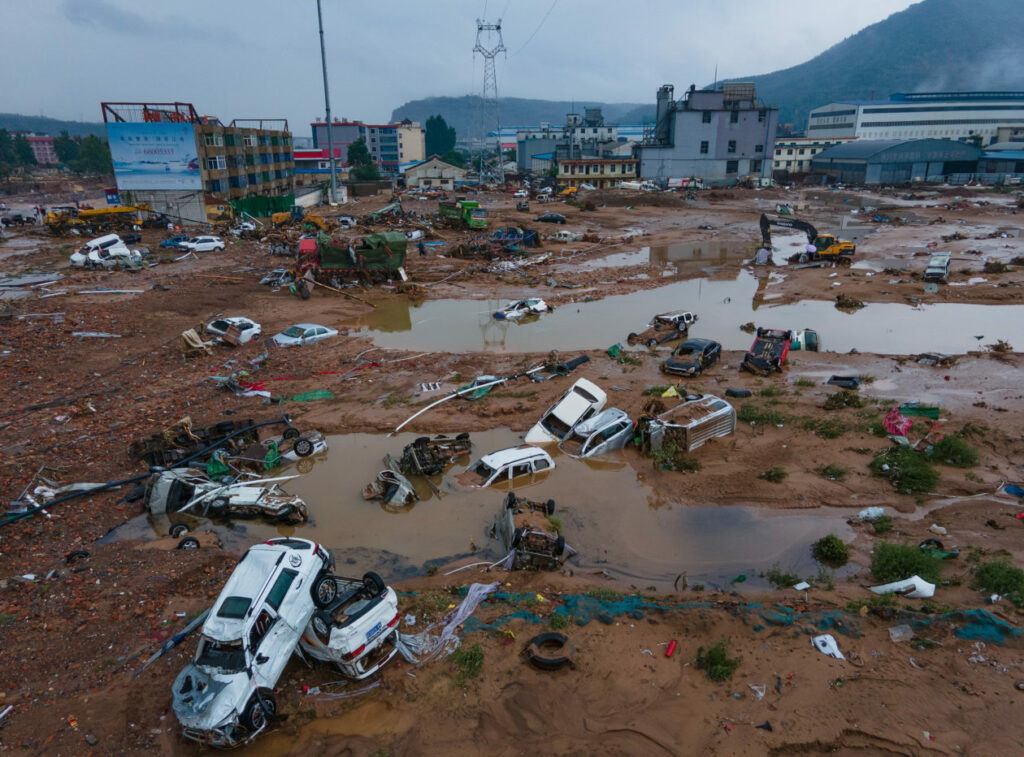
Nick Robins of the London School of Economics, who was formerly in charge of sustainable finance at the UN Environment Programme, agrees. “At a minimum, central bank actions should not be working against net-zero plans,” he said.
But Campiglio said that “there are good reasons behind keeping central banks independent [of government policies]. Moving towards a system with stronger government control — as in China — might help with supporting a low-carbon transition but could be a risky path for institutional legitimacy and credibility.”
Across the Atlantic, Powell remains much more cautious about such market interventions. He insisted in June that climate change remains a matter for the government rather than the Fed’s monetary policy. But that could change. As Dougherty wrote in a blog post in March, the Fed’s self-described goal “to promote the effective operation of the U.S. economy and, more generally, the public interest” means that it “has the authority — and the duty — to use all the tools at its disposal for climate change work.”
It is now 14 years since the former chief economist at the World Bank, Nicholas Stern, wrote an influential report for the British government which concluded that, as he told the London Times, climate change was “the greatest and widest-ranging market failure ever seen.” Central bankers are still grappling with the implications. But Dougherty believes change is coming. “In five years, I would be very surprised if climate change wasn’t a major consideration in all Fed regulation,” she said.